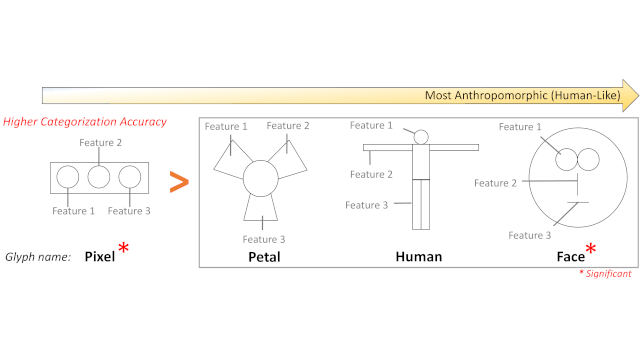Effect of anthropomorphic glyph design on the accuracy of categorization tasks

Abstract
Data glyphs continue to gain popularity for information communication. However, the cognition and perception theory of glyphs is largely unknown for many tasks including "categorization". Categorization tasks are common in everyday life from sorting objects to a doctor diagnosing a patient’s disease. However it is unknown how glyph designs, specifically anthropomorphic human-like representations which in prior visualization research have demonstrated improved information recall, affect accuracy in a categorization task. To better understand how people comprehend and perceive glyphs for categorization, including anthropomorphic representations, we conducted a crowdsourced experiment to evaluate whether more human-like glyphs would lead to higher categorization accuracy. Contrary to our hypothesis, we found evidence that subjects are more accurate with a less anthropomorphic glyph. A posthoc analysis also reveals that anthropomorphic glyphs introduce biases due to their anatomically salient features. Based on these results we propose design guidelines for glyphs used in categorization tasks. The supplemental material of this paper available is on https://osf.io/3bgcv/.
Authors
Citation
Effect of anthropomorphic glyph design on the accuracy of categorization tasks
Aditeya Pandey, Peter Bex, and Michelle A. Borkin. Proc. Extended Abstracts of CHI Conference on Human Factors in Computing Systems—CHI EA. 2022. DOI: 10.1145/3491101.3519748
PDF | Preprint | DOI | Supplement | BibTeX
Khoury Vis Lab — Northeastern University
* West Village H, Room 302, 440 Huntington Ave, Boston, MA 02115, USA
* 100 Fore Street, Portland, ME 04101, USA
* Carnegie Hall, 201, 5000 MacArthur Blvd, Oakland, CA 94613, USA


